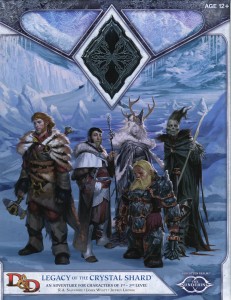While the Dungeon’s Master team enjoys some well-deserved vacation time, we’re breaking out the greatest hits and shining a spotlight on a few of our favourite articles from 2013. We’ve searched for hidden gems that our newer readers might have missed and our long-time readers will enjoy reading again. Enjoy a second look at these greatest hits from Dungeon’s Master.
This article talks about the difficulties some DMs have going from being a DM to being a player. We provide 11 guidelines that, if followed, should make the transition easier. Today I’d like to share a tale about how I handled a difficult former DM turned player at my table.
Earlier this year I had a player at my table during a public play game who was a regular DM in his home game. He’s a good player, and I’m sure he’s a great DM, but he’s obsessed with optimizing. On the plus side, you really have to know the rules backwards and forwards to get the most out of character optimization. On the negative side, his characters are often so much more powerful than the rest of the PCs in the party it makes it difficult for me as the DM to challenge him and not kill everyone else. On top of that, he’s an Alpha personality and likes to be the party leader (in and out of character).
Looking at the list of tips for DMs turned players presented in the original article below; I’d say he rides the list right down the middle. He does about half of the good things but is guilty of committing the other half of the grievances. The trait that I think he finds hardest to shake is giving up control – which is why he usually tries to take on party leadership. The challenge is that he often tells (rather than suggests) other, newer players what action to take on their turn.
Now I’ll admit that I’m guilty of this from time-to-time. The fountain of experience bubbles up and I want to make sure that other players take the best action on their turn. So I understand where the need to pipe up and say something comes from in DMs turned players. But I’ve had it happen to me as a player and I see it a lot as the DM so I know how annoying it can be.
Here’s how I handled the situation. First and foremost I talked to the offending player. On numerous occasions I reminded him that his turn was over and he needed to let the other players take their turn without interference. I’ve also explained to the whole table that from time to time I may skirt the rules as written if it will make the play experience better.
When the DM turned player wasn’t at the table one week I challenged the rest of the players to take on the role of party leader and not to defer to just one PC. I reminded them that they can do whatever they want with their character and although other players may offer suggestions they should never feel pressured to follow that advice.
The final step I took was insisting that players could only talk to each other if their PCs were close enough to hear one and other. As the DM turned player liked to play characters that often broke party ranks to do his own thing, this forced him to be more of a team player or keep quiet.
By combining all of these steps the player finally settled into a happy balance. He still offered suggestions (which in all fairness were usually great suggestions), but only when situations allowed it. The other players started challenging his automatic status as leader and the responsibility became a shared one. He’s still a tough player to pin down, but he’s certainly come a long way since transitioning from DM to player.
From January 11, 2013, Dungeon’s Master once again presents: DMs Are the Worst Players.
 Looking for instant updates? Subscribe to the Dungeon’s Master feed!
Looking for instant updates? Subscribe to the Dungeon’s Master feed!
